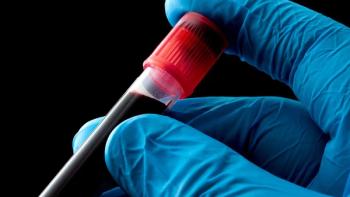
Testosterone Recovery in Prostate Cancer May Depend on ADT Intensity
Key Takeaways
- Testosterone recovery post-ADT is influenced by treatment duration, baseline testosterone levels, and patient age.
- Younger patients and those with higher baseline testosterone levels recover more quickly.
Patients with prostate cancer may differ in time to testosterone recovery, depending on the length of treatment and age, but takes six months on average.
The time to testosterone recovery in patients with prostate cancer depends on factors including length of androgen deprivation therapy (ADT), testosterone levels before treatment and age.
A study published in European Urology included 1,444 patients with prostate cancer from five trials. Among the overall patient population, researchers treated 115 with ADT for four months, treated 880 for six months, treated 353 for 18 months, treated 36 for 28 months and treated 60 for 36 months. Of note, patients who received ADT for longer periods had more aggressive prostate cancer, senior study author Dr. Amar Kishan explained to CURE®.
Kishan is a radiation oncologist and the executive vice chair for the Department of Radiation Oncology at the David Geffen School of Medicine at UCLA and the UCLA Jonsson Comprehensive Cancer Center in Los Angeles.
“What we wanted to look at is whether we could identify two things. The first is patterns and predictors of recovering testosterone,” he said. “The second is whether there is any association between how long it takes to recover testosterone and the ultimate cure rates or outcomes.”
Testosterone Recovery in Patients With Prostate Cancer
After treatment for prostate cancer, it’s common for patients to
“A side effect that patients are bothered by is the low testosterone levels because it has that consolation of side effects,” he said. “The key is this is intended to be temporary. We’re not trying to permanently suppress testosterone levels — [just] temporarily to help treat the prostate cancer.”
Researchers established from the findings that patients with higher baseline testosterone levels and who were younger were more likely to recover testosterone. The variability in testosterone recovery, Kishan said, was surprising to him and his co-authors.
“One was [patients’] baseline testosterone,” he explained. “So it is intuitive, but a patient with a higher baseline testosterone actually recovers testosterone much more quickly than someone who maybe has a lower testosterone baseline.
“Younger men [also] tend to recover testosterone much more quickly than older men. So, we had maybe hypothesized that that would be the case, but the magnitude of those effects is pretty significant, and that was interesting to us.”
Kishan explained that the average time is approximately six months, “which is good," regarding the specific timing for testosterone recovery. The rate of recovery surpassing 18 months means it may take a bit longer for testosterone recovery, he said.
“Not everyone recovers at the same time,” Kishan also noted. “There may be men who, even six months after they've stopped hormone therapy, have not begun to recover testosterone.”
Side Effects of ADT and Management in Patients With Prostate Cancer
Some common side effects associated with ADT for prostate cancer include loss of libido, hot flashes, weight gain, decreased bone density, insulin resistance and mood disturbances, according to Kishan.
“There are a lot of potential side effects,” he explained. “It’s often like a landmark event for someone to recover their testosterone after going through this long period of testosterone suppression.”
Although this side effect can be particularly frustrating, Kishan emphasized that patients should avoid doing something extra to recover unnaturally.
“I tell patients in the beginning … it’s at least six months on average to start to recover testosterone after getting six months of hormone therapy,” he said. “In that first six months, it’s unlikely for someone to recover and we don’t want someone to do something extra to recover. We want them to take that time to naturally recover.”
Kishan noted that unless patients are demonstrating signs of no recovery, they typically do not receive testosterone replacement therapy. Nonetheless, “most patients do recover. It is variable from patient to patient and it’s certainly frustrating.”
For patients who are looking to further mitigate side effects of ADT, Kishan recommended patients discuss options with their doctors.
“It’s totally normal to feel disappointed with the side effects,” he said. “Be open with providers about any side effects that are experienced, whether there may be prescription medications or lifestyle changes like exercise, [taking] calcium supplements, or something that could help mitigate some of the side effects.”
For more news on cancer updates, research, and education, don’t forget to





